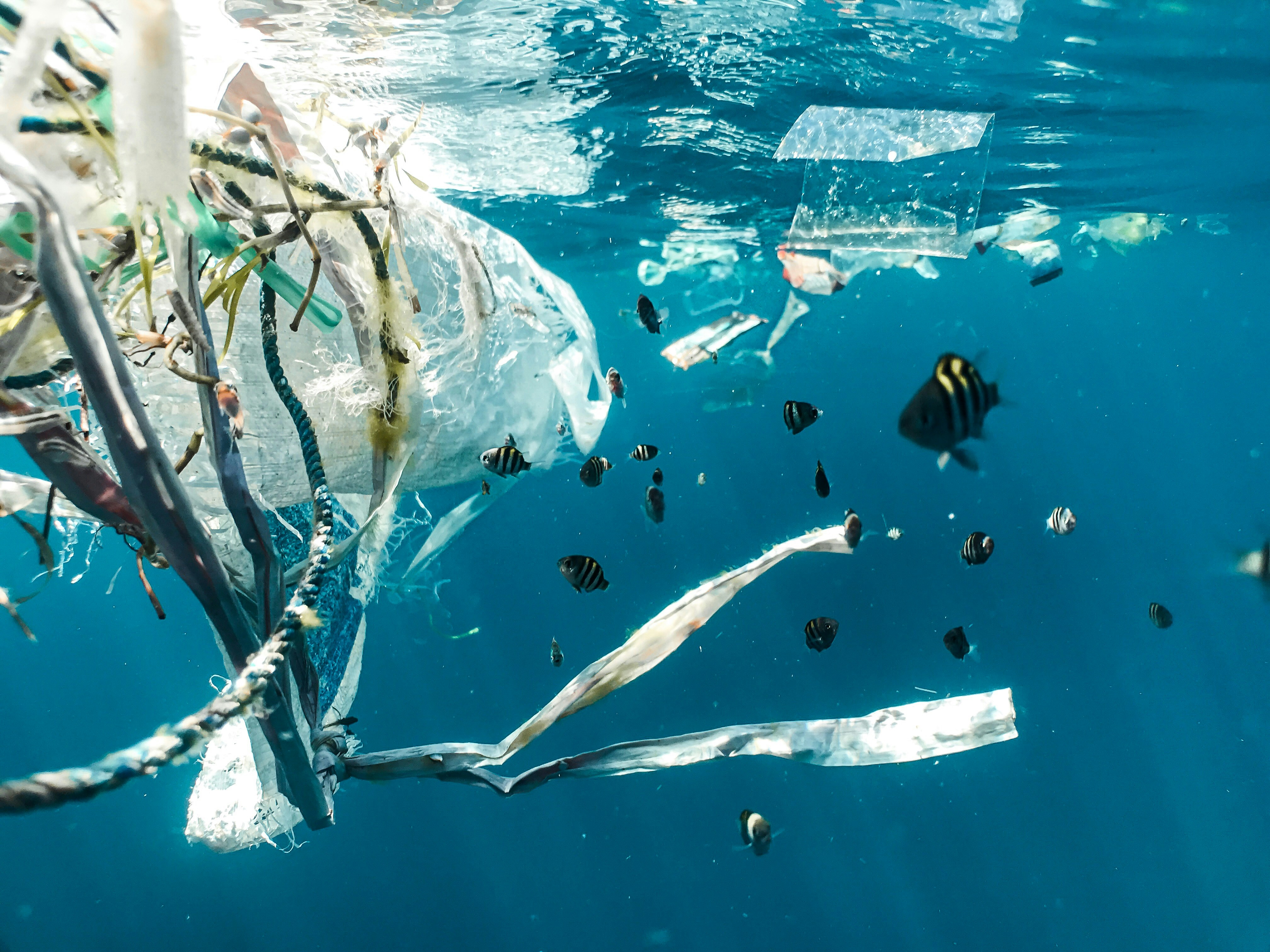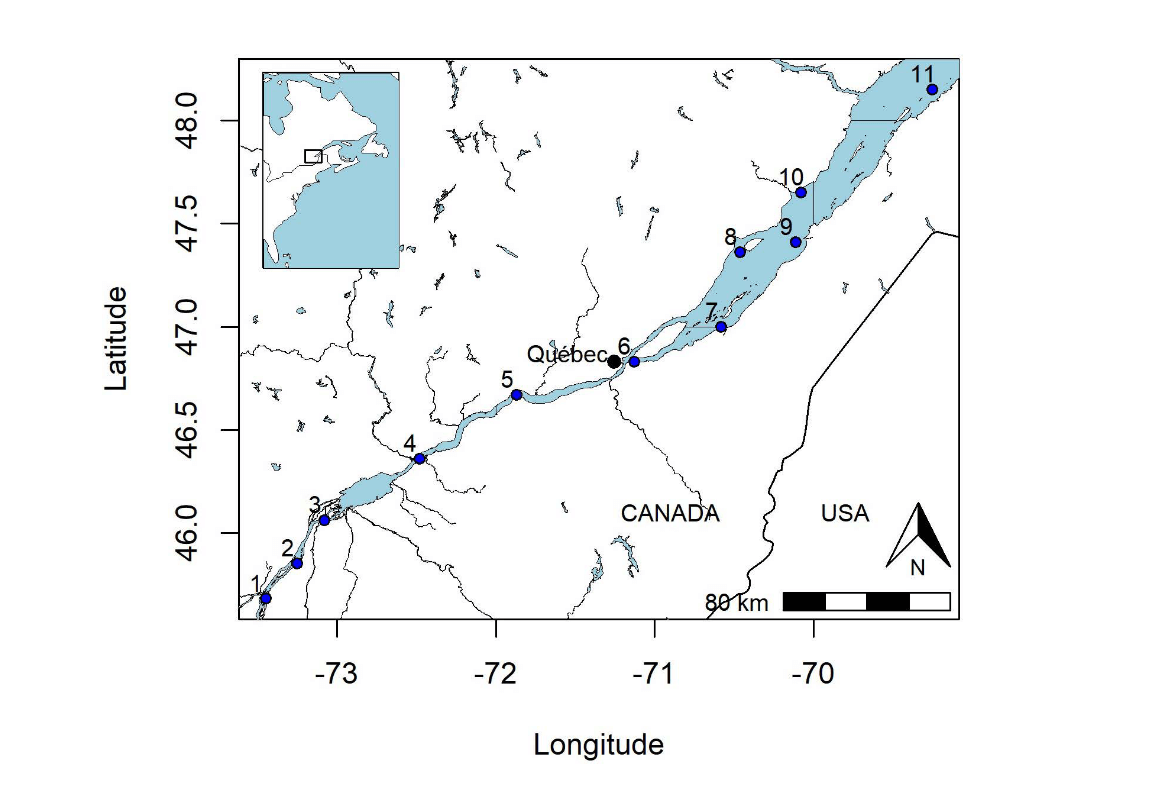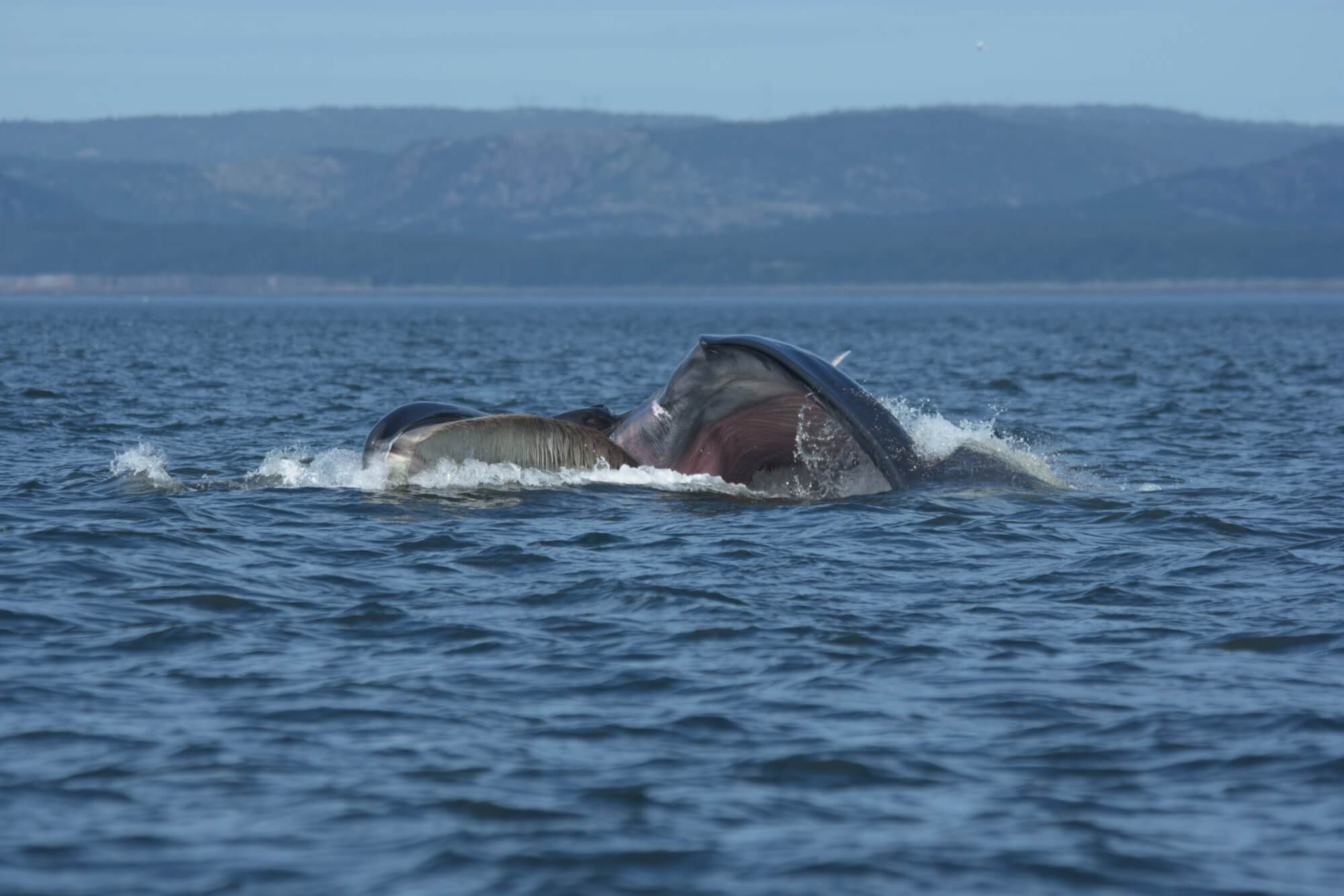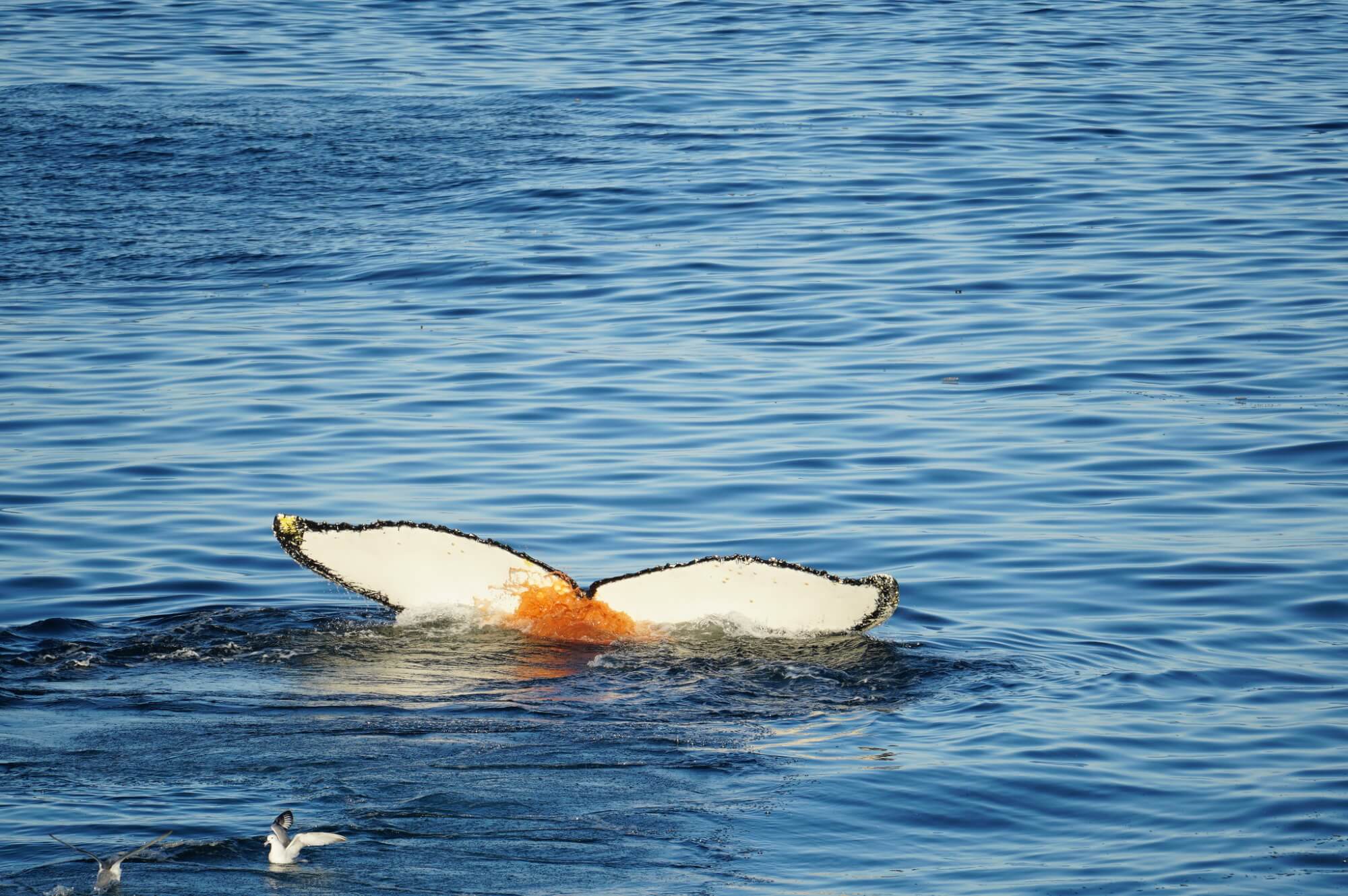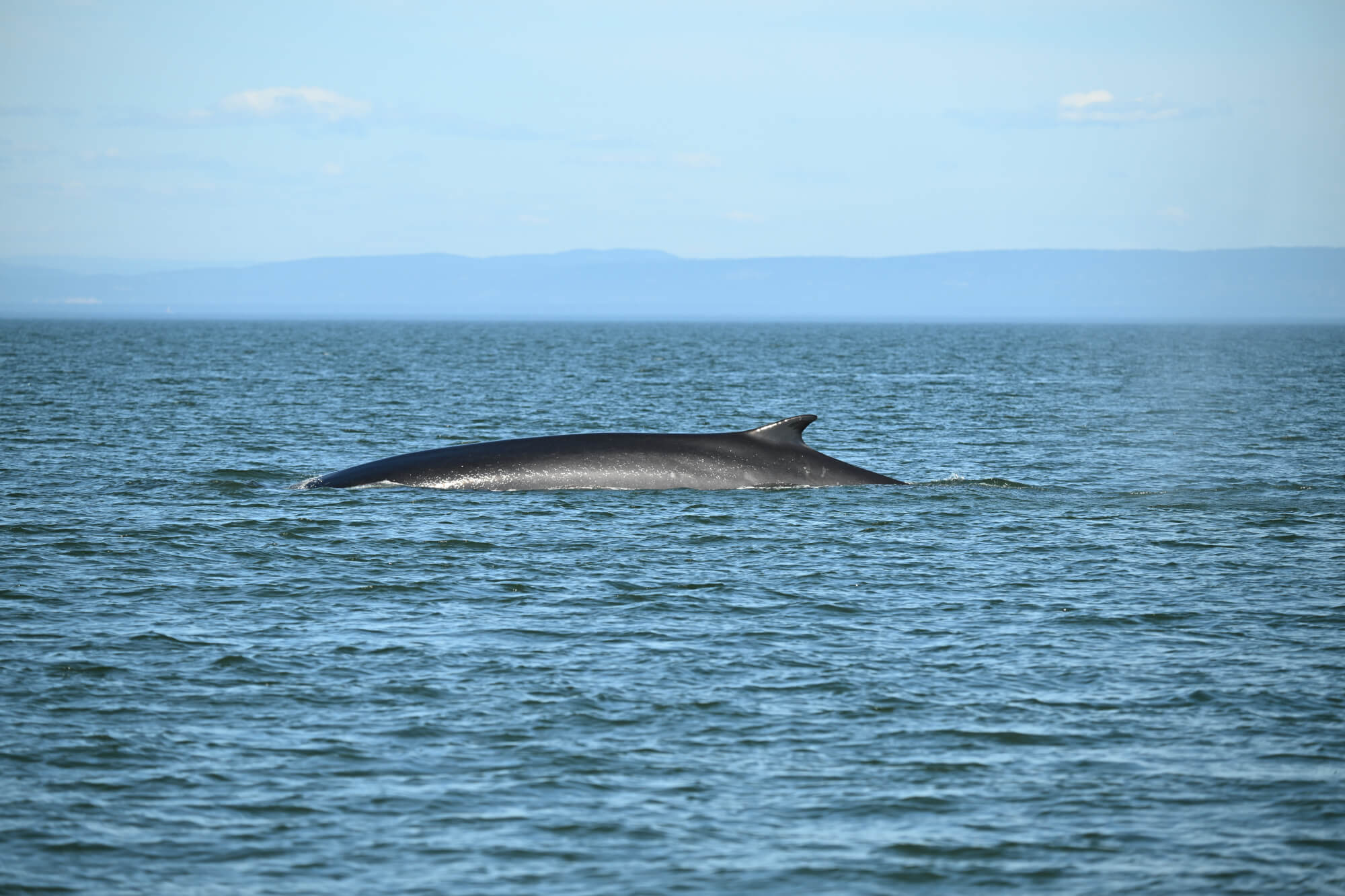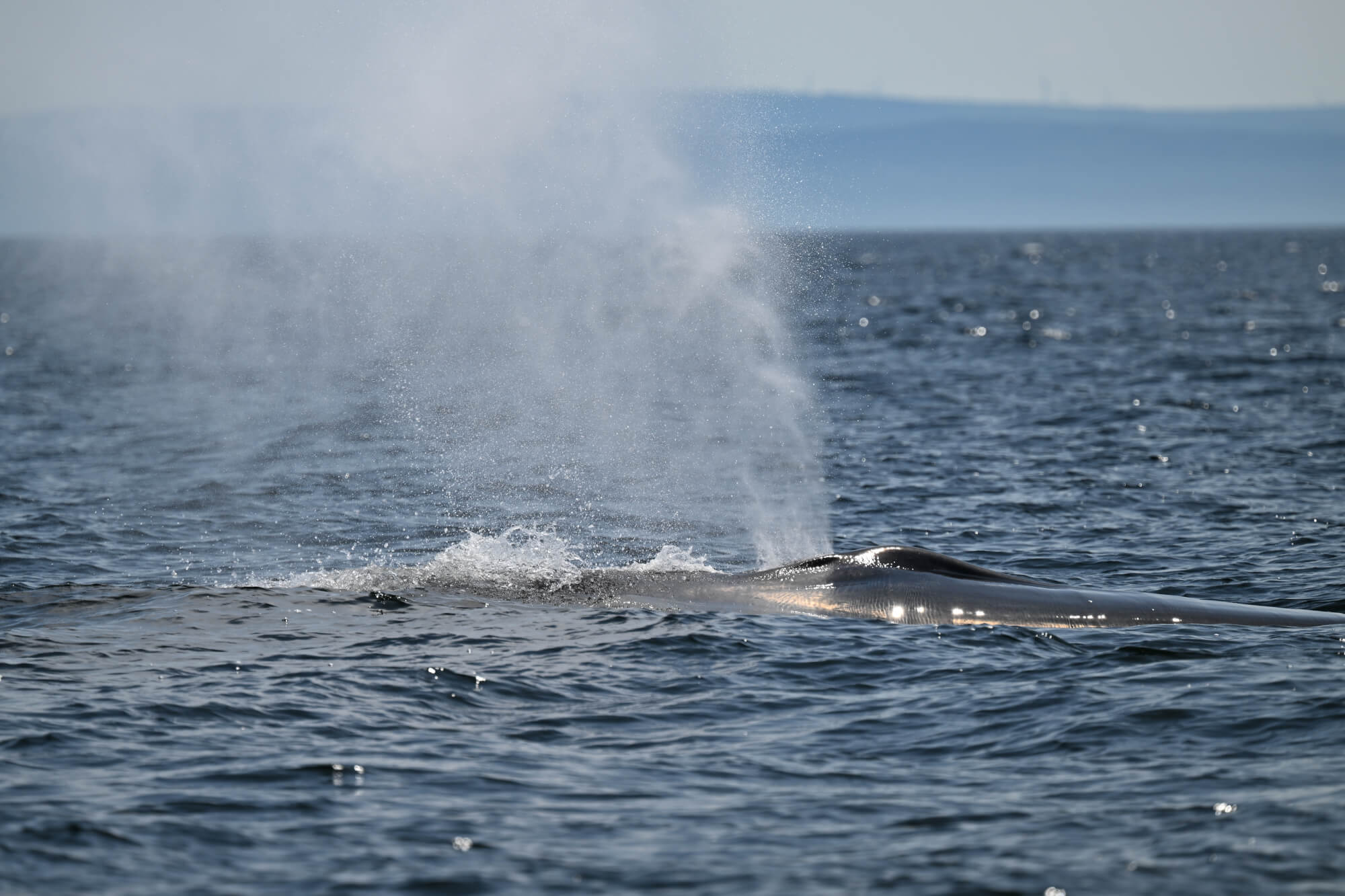With tens of millions of tonnes of microplastics released every year by humanity’s unrestrained consumerism, our rivers and oceans now contain over 140 million tonnes of plastic waste. But is the St. Lawrence just as polluted?
An article published in 2025 by the National Institute for Scientific Research (INRS) sheds light on this issue by measuring the quantity of microplastics in the river, and the data are irrefutable: Every one of the 11 sites studied contained microplastics in varying quantities. Surprisingly, however, concentrations were not higher near the major urban centres that produce the majority of plastic waste. It was actually the opposite that was measured. Concentrations are higher farther down the estuary, which is much less populated! Let’s take a closer look at this problematic debris.
From Varennes to Trois-Pistoles
The results are partially encouraging. The team found that microplastic concentrations were not statistically different between the various sites studied and were generally below 100 particles of plastic per million litres (PPML). At similar sites in urban rivers in China, concentrations have been found to exceed 2 million PPML. Professor Valérie S. Langlois from the INRS Eau Terre Environnement Research Centre agrees: Although sampling methods differ, the St. Lawrence River is less polluted with microplastics than other comparable rivers.
Surprisingly, however, the research team’s data contradicted its hypotheses. Since the majority of plastic waste comes from urban environments, the team predicted that the highest levels of microplastic contamination would be found in the waters near large population centres. Instead, contamination levels were highest in saline environments with less human impact. This is thought to be due to the salinity of the water, which has a direct impact on the coagulation of plastics and their solubility in water.
The sites chosen for sampling included areas affected by human presence, such as Quebec City and Trois-Rivières, as well as more isolated ones, such as Montmagny and La Malbaie. Salinity also varied between sites, ranging from the fresher waters of Varennes to the salty waters of Trois-Pistoles. The study sampled surface water at each of the 11 selected sites in the St. Lawrence Estuary using two different collection nets. Attached to the research vessel, these nets were passed through the water at a depth of 40 cm to collect three samples at each site. The samples were then analyzed to determine the quantity, size, and type of polymers detected in order to understand the composition of what can be found in our waters.
So, are whales ingesting them?
With the understanding that saline environments are more conducive to high concentrations of microplastics, one might ask: Are marine mammals that live their entire lives in these waters more likely to have them in their systems? And what kinds of impacts are these contaminants having on their health? These questions are currently difficult to answer, but a great deal of research is currently being conducted around the globe. This is particularly the case at Université du Québec à Rimouski under the direction of Zhe Lu, professor of ecotoxicology, environmental chemistry, and oceanography.
Current research on microplastics shows that they do not appear to bioaccumulate in the food chain. This contrasts with other contaminants such as mercury or pesticides, which become more concentrated through predator diets. It is therefore unclear whether microplastics can disproportionately affect predators such as the whales of the St. Lawrence. However, with large quantities of microplastics being measured in whale feces, it’s easy to conclude that they are finding their way into the diets of these creatures. And with the numerous impacts measured on human health, this definitely cannot be positive for marine mammals.
The data are coming in!
Realizing that the St. Lawrence is not immune to microplastic contamination is a step in the right direction. However, researchers agree: There is a serious lack of information on the impact these plastics can have on marine wildlife.
In 2022, the Université du Québec à Rimouski received funding to conduct research projects on the impact of microplastics, and according to Professor Zhe Lu, the data are beginning to come in! The team recently published an article on the impact of microplastics on benthic fish. These researchers are also working on microplastic photodegradation, the risks of microplastic contamination, and the impact of microplastics on the St. Lawrence food chain. Stay tuned!


